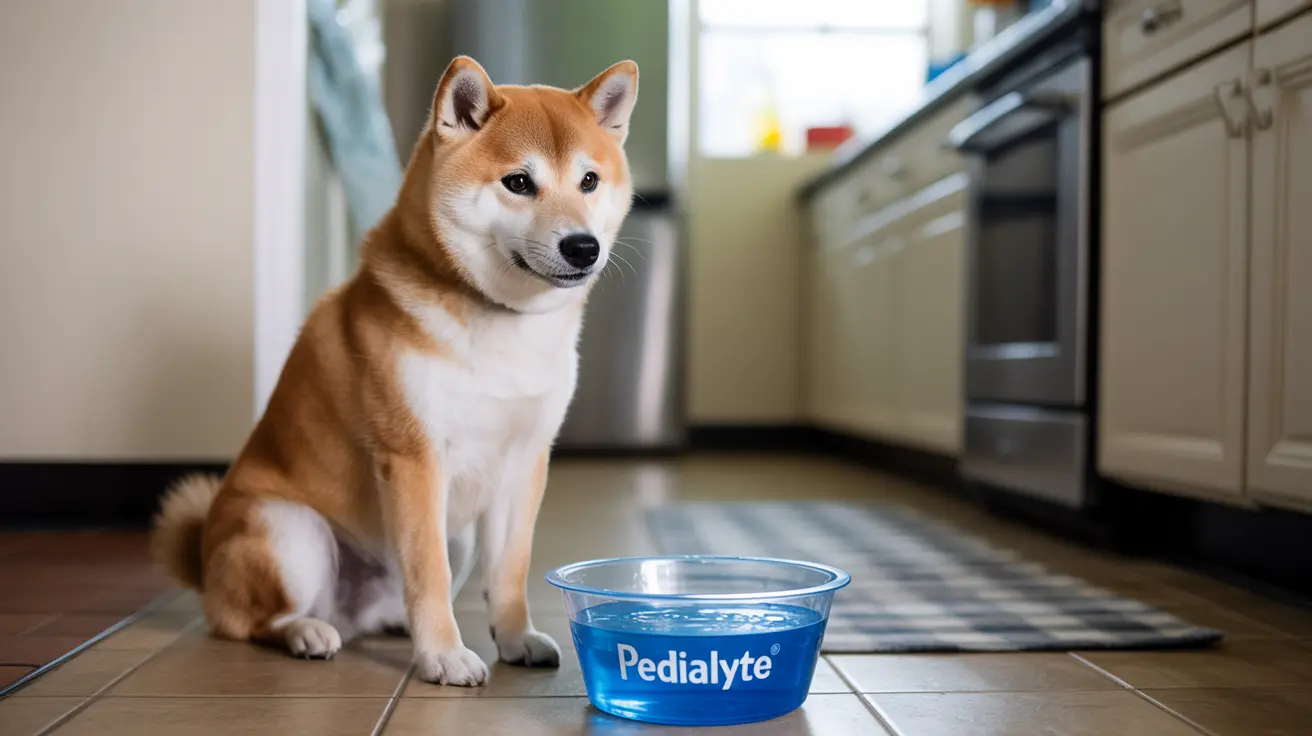When your dog is experiencing dehydration from vomiting or diarrhea, you might wonder if Pedialyte could help. While this human electrolyte solution is commonly used for people, its use in dogs requires careful consideration. This comprehensive guide will explore the safety, risks, and alternatives to using Pedialyte for dogs.
Understanding Pedialyte and Dogs
Pedialyte is an oral electrolyte solution designed for humans that contains water, dextrose, and minerals like sodium and potassium. While it effectively treats human dehydration, its formulation isn't tailored to canine physiology. Dogs have different electrolyte needs and processing capabilities compared to humans, making the use of Pedialyte potentially problematic.
Safety Concerns and Risks
While small amounts of unflavored Pedialyte might not cause immediate harm to healthy dogs, several important risks exist:
Sodium Content Issues
The sodium levels in Pedialyte are calibrated for humans, not dogs. Excessive sodium intake can lead to electrolyte imbalances and potentially worsen dehydration in dogs.
Blood Sugar Complications
The dextrose (sugar) content in Pedialyte can be particularly dangerous for diabetic dogs or those with other metabolic conditions. Even in healthy dogs, sudden glucose spikes aren't ideal.
Specific Health Risks
Dogs with certain conditions face increased risks:
- Kidney disease: Difficulty processing additional electrolytes
- Heart conditions: Potential fluid balance disruption
- Diabetes: Blood sugar regulation challenges
- Sensitive stomachs: Possible gastrointestinal upset
When Professional Care Is Needed
Instead of reaching for Pedialyte, seek immediate veterinary care if your dog shows:
- Severe lethargy
- Prolonged vomiting or diarrhea
- Refusal to drink water
- Dry, sticky gums
- Sunken eyes
- Loss of skin elasticity
Better Alternatives for Dog Hydration
Water: The First Line of Defense
Fresh, clean water is usually the best solution for mild dehydration in dogs. Unlike humans, dogs don't lose electrolytes through sweating, making water often sufficient for rehydration.
Veterinary Solutions
For cases requiring more than water:
- Veterinary-specific electrolyte solutions
- Subcutaneous fluid therapy
- IV fluids for severe cases
Prevention and Monitoring
The best approach to dehydration is prevention:
- Ensure constant access to fresh water
- Monitor water intake during illness
- Watch for early signs of dehydration
- Maintain regular veterinary check-ups
Frequently Asked Questions
Is it safe to give my dog Pedialyte for dehydration after vomiting or diarrhea?
While small amounts of unflavored Pedialyte aren't immediately dangerous, it's not recommended as a first-line treatment. Water is safer, and veterinary consultation is advised for ongoing symptoms.
What are the risks of using Pedialyte in dogs with diabetes, kidney, or heart disease?
Dogs with these conditions face increased risks from Pedialyte's sodium and sugar content. The solution can worsen existing conditions and create dangerous complications. Always consult a veterinarian for these cases.
How should I properly use Pedialyte for my dog if recommended by a vet?
If veterinary-approved, use only unflavored Pedialyte in small amounts. Follow your vet's specific dosing instructions and monitor your dog closely for adverse reactions.
What are safer alternatives to Pedialyte for rehydrating a dehydrated dog?
Fresh water is the safest option for mild dehydration. For more serious cases, veterinary-specific electrolyte solutions or professional fluid therapy are preferred alternatives.
What signs of dehydration in dogs mean I should see a veterinarian instead of using home remedies?
Seek immediate veterinary care for severe lethargy, persistent vomiting or diarrhea, dry gums, sunken eyes, loss of skin elasticity, or if your dog refuses to drink water for more than 24 hours.
Conclusion
While Pedialyte might seem like a helpful solution for dehydrated dogs, its risks often outweigh potential benefits. Focus on prevention, provide fresh water, and consult your veterinarian for proper treatment options when needed. Your dog's safety and health are worth the professional guidance.






